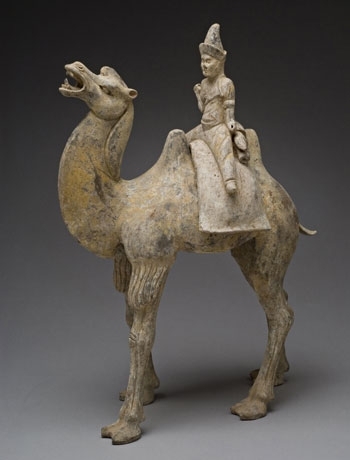Tombs, Temples, Palaces, and Tea: The Social Roles of Ceramics in Asia
–
This exhibition explores the practical and social uses of ceramics in Asia.
Asian ceramics are the most varied in the world: they have been used for vessels, ritual objects, sculpture, and for even architectural ornament. They are also unrivaled in technical quality and in their sheer volume. They played important roles in Korea and Japan, where they lay at the very heart of the tea ceremony, while in the Islamic world ceramic tiles were indispensable to architectural facades.
Asian ceramics, particularly Chinese, were exported in staggering quantities and exerted a profound influence on Western ceramics. Chinese and Japanese porcelains were widely copied in the West, and the wabi aesthetic of the Japanese tea ceremony lies behind almost all modern studio pottery. We invite you to explore the wonderful world of clay transformed.

Anonymous (Chinese), Camel and Rider, 618–906 (Tang dynasty), terracotta, 23 x 16 1/2 x 8 5/8 inches, Gift of David Dewey ’79 in appreciation of the Professors of the Chinese School at Middlebury College. 2006.035.1-.2.
This exhibition is curated by students in the fall 2007 College Writing Course on Asian ceramics taught by Colin Mackenzie.
